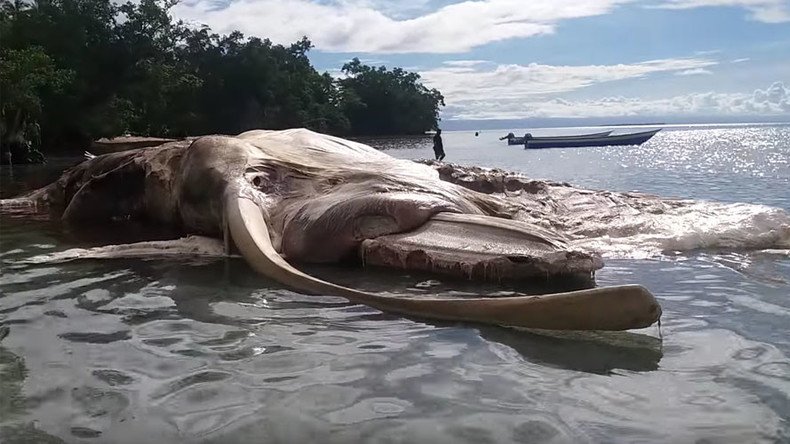Enormous ‘sea monster’ washed up on Indonesian coast identified by experts

An enormous mystery carcass which left investigators baffled when it washed ashore in Huamual, Indonesia has finally been identified by several experts.
The giant sea creature was discovered in bloody water on the island of Seram last week and sparked huge discussion on what the badly decomposed animal actually was.
Suggestions ranged from giant squid to whale to long lost sea monster. The fisherman is reported to have initially thought it was a boat caught in shallow water.
In a poll run by RT the majority of readers guessed the mysterious creature was in fact a whale – an assertion which has now been backed by several experts.
Alexander Werth, whale biologist at Hampden-Sydney College in Virginia, believes the 22-meter (71ft) carcass was likely a baleen whale in an advanced state of decomposition.
"There is lots of stuff in the ocean that we don't know about — but there's nothing that big” that remains unknown, Werth told Live Science.
He said that two giveaway signs were the "throat pleats," and the upper jaw where the two racks of baleen plates, used for filtering out food in the whale's mouth, would have been.
Mysterious monster carcass causes utter confusion in Indonesia https://t.co/Kyidtfuz28pic.twitter.com/Dx4c4LzwI2
— RT (@RT_com) May 13, 2017
The exact species of baleen whale, however, remains unclear. Werth suggests it could be a blue whale or a Bryde’s whale while Moe Flannery, collections manager in ornithology and mammalogy at the California Academy of Sciences, proposed it could be a fin whale.
Edith Widder, CEO and senior scientist at the Ocean Research & Conservation Association told the Huffington Post that the images show what looks like baleen plates. George Leonard, the chief scientist at the Ocean Conservancy, agreed that the remains most likely belong to a baleen whale.
Indonesia’s Office of Marine and Coastal Resources Management said upon the discovery that it was a suspected whale but a sample would be carried out to confirm its identity.













